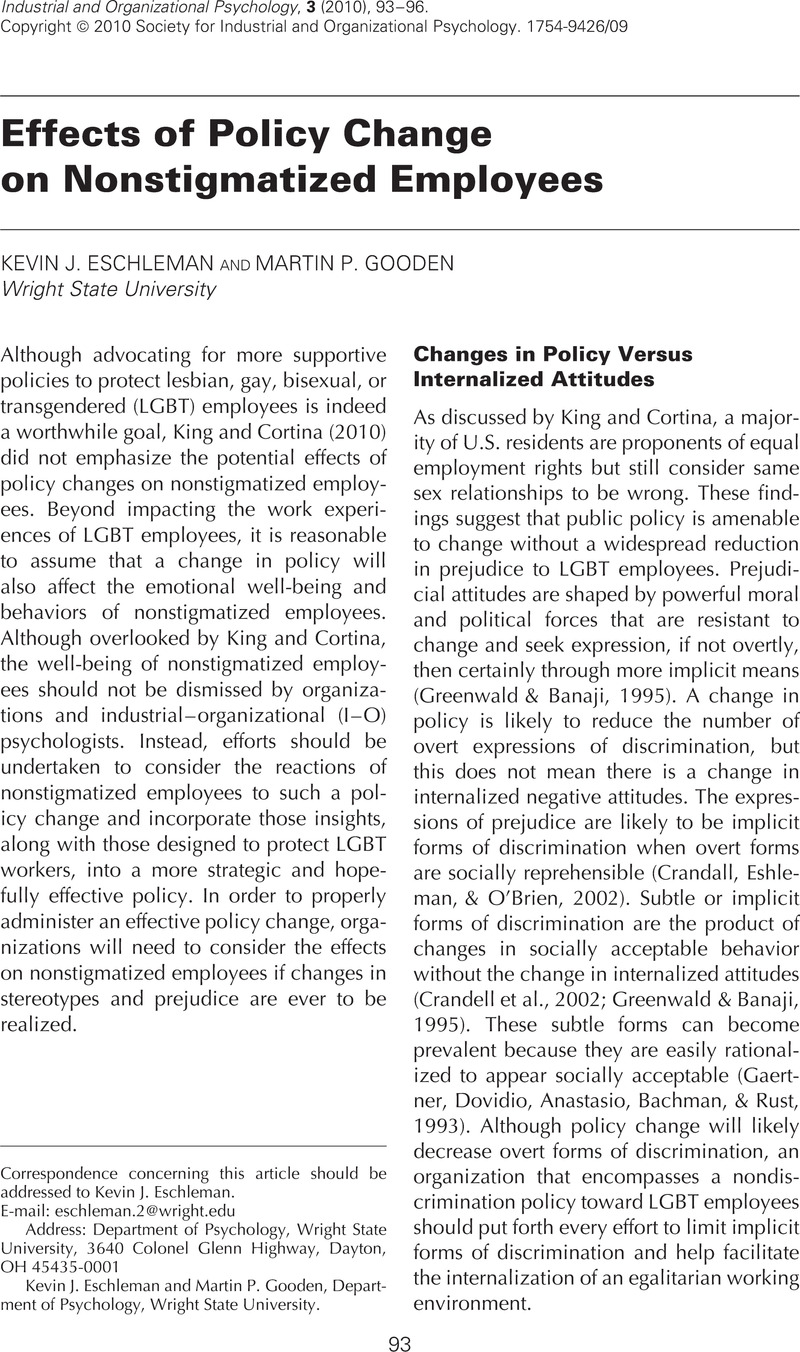Crossref Citations
This article has been cited by the following publications. This list is generated based on data provided by Crossref.
King, Eden B.
and
Cortina, José M.
2010.
Stated and Unstated Opportunities and Barriers to Lesbian, Gay, Bisexual, and Transgendered Supportive Organizations.
Industrial and Organizational Psychology,
Vol. 3,
Issue. 1,
p.
103.



